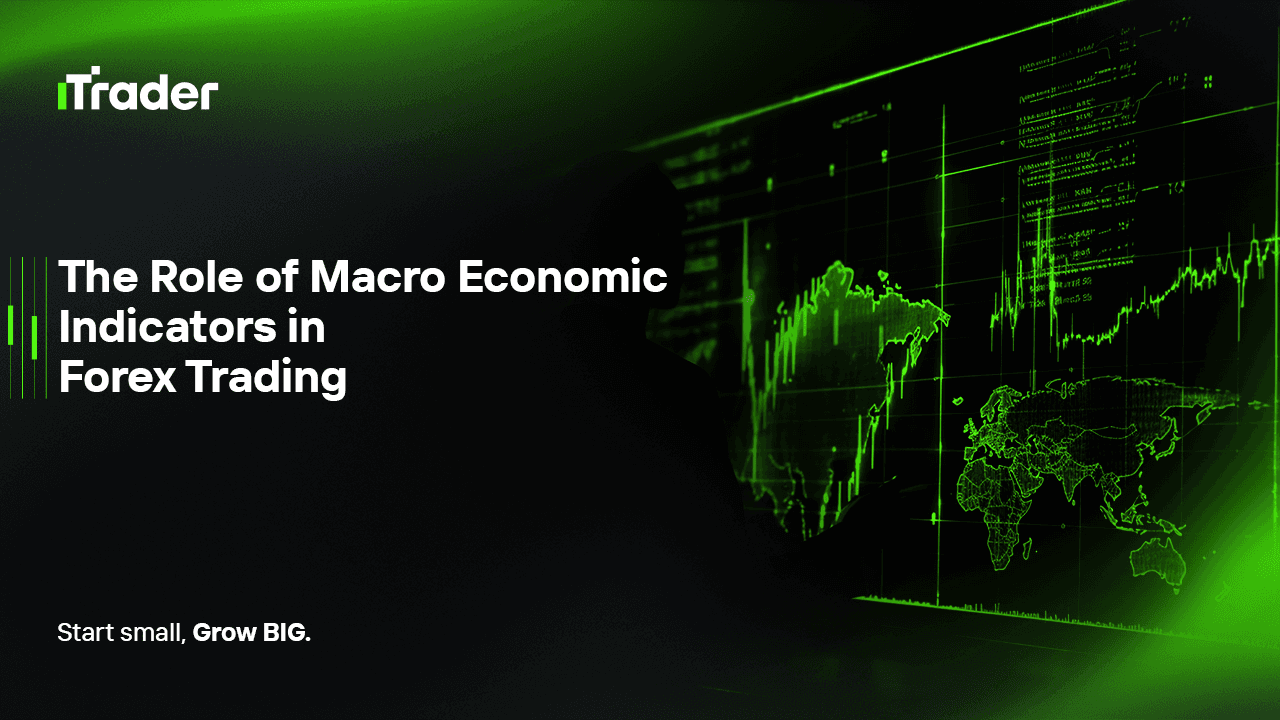2025-08-22
In the world of professional trading, especially for those engaged in prop firm challenges, understanding the forces that drive currency movements goes far beyond technical analysis. While price action, liquidity shifts, and order flow dynamics are crucial in short-term decision-making, the macro backdrop sets the stage upon which these micro-movements unfold. For prop traders who need consistent performance under strict drawdown and risk rules, grasping the relationship between macroeconomic indicators and forex market behavior is not just an academic exercise—it is a survival skill.

Currencies are, at their core, expressions of national economies. The health, stability, and policy direction of an economy shape investor perception, capital flows, and ultimately the valuation of its currency. This means that data points like GDP growth, inflation reports, interest rate decisions, and labor market trends are not simply numbers on an economic calendar; they are signals of structural pressure that shape medium- and long-term trends while also creating short bursts of volatility.
In this article, we will explore how macroeconomic indicators interact with forex markets, with a focus on what prop traders specifically need to extract from them. We will look at key economic data categories, how they impact currency valuations, the interplay with monetary policy, and practical strategies to incorporate macro awareness into a prop trading framework.
Prop firm traders often emphasize risk control, trade frequency, and execution discipline. Yet the majority of their failures are not due to poor entries but rather inadequate adaptation to market regime shifts. These shifts are almost always driven by macroeconomic developments—policy pivots, unexpected data surprises, or global capital rotations.
Ignoring macro means ignoring the root causes of volatility clusters. For example:
For a prop trader bound by strict maximum daily loss and overall drawdown limits, understanding these forces can prevent getting blindsided by volatility that looks “random” on the chart but is fully explainable through the macro lens.
Macroeconomic data releases are not created equal. Some indicators consistently move markets; others provide context without triggering major price shifts. Below are the key categories:
For traders, growth indicators matter because they influence risk appetite and central bank expectations.
Currencies often react violently to inflation surprises, since they directly affect interest rate futures pricing.
Interest rates are the ultimate driver of currency valuation. The expectation of higher yields attracts capital flows. Therefore, central bank meetings, forward guidance, and minutes are often more important than the data itself.
It is not the raw data that moves markets—it is the difference between expectation and outcome. A CPI print of 3.2% might strengthen a currency if consensus was 3.0%, but weaken it if traders had already priced in 3.5%.
This is why prop traders need to track expectations, not just releases. Economic calendars with consensus estimates, as well as tools like OIS curves and bond yield spreads, give critical context.
Another layer is market sentiment and narrative. In some regimes, traders ignore weak data if they believe a central bank is committed to tightening. In other regimes, even small misses can trigger outsized moves. Thus, the same number can have different effects depending on macro context.
One of the biggest advantages of macro awareness is in position sizing and risk allocation. Prop traders don’t need to predict every number, but they must anticipate volatility pockets.
In prop environments where risk per day is capped, managing exposure around macro events is essential for survival.
For prop traders looking to operationalize macro awareness, a simple framework can be:
While individual data releases move markets in the short run, larger macro cycles drive sustained trends. Prop traders who align with these cycles can ride multi-month moves while avoiding contrarian traps.
Key themes include:
Prop traders often focus heavily on technical precision—entry timing, spreads, execution speed. But without a macro compass, these micro-skills are vulnerable to shifts that feel random. In reality, nothing is random when you see the cause-effect chain: data → central bank expectations → capital flows → currency price.
Understanding macroeconomic indicators is not about becoming an economist; it’s about protecting capital, anticipating volatility, and aligning with the market’s dominant forces. For prop traders, it is the difference between surviving challenges and consistently scaling capital allocations.
© 2025 iTrader Global Limited | 회사 등록번호: 15962
iTrader Global Limited는 코모로 연방 앙주앙 자치섬의 무잠두(Hamchako, Mutsamudu)에 위치하고 있으며, 코모로 증권위원회(Securities Commission of the Comoros)의 인가 및 규제를 받고 있습니다. 당사의 라이선스 번호는 L15962/ITGL입니다.
iTrader Global Limited는 “iTrader”라는 상호로 운영되며, 외환 거래 활동에 대한 인가를 받았습니다. 회사의 로고, 상표 및 웹사이트는 iTrader Global Limited의 독점 재산입니다.
iTrader Global Limited의 다른 자회사로는 iTrader Global Pty Ltd가 있으며, 이 회사는 호주 회사 등록번호(ACN): 686 857 198을 보유하고 있습니다. 해당 회사는 Opheleo Holdings Pty Ltd의 공식 대리인(AFS 대표 번호: 001315037)이며, Opheleo Holdings Pty Ltd는 호주 금융서비스 라이선스(AFSL 번호: 000224485)를 보유하고 있습니다. 등록 주소는 Level 1, 256 Rundle St, Adelaide, SA 5000입니다.
면책 조항: 이 회사는 본 웹사이트에서 거래되는 금융 상품의 발행인이 아니며 이에 대해 책임을 지지 않습니다.
위험 고지: 차액결제거래(CFD)는 레버리지로 인해 자본 손실이 빠르게 발생할 수 있는 높은 위험을 수반하며, 모든 사용자에게 적합하지 않을 수 있습니다.
펀드, CFD 및 기타 고레버리지 상품의 거래에는 전문적인 지식이 요구됩니다.
연구 결과에 따르면 레버리지 거래자의 84.01%가 손실을 경험하고 있습니다. 거래에 참여하기 전에 관련 위험을 충분히 이해하고 전체 자본을 잃을 준비가 되어 있는지 확인하십시오.
iTrader는 레버리지 거래로 인해 발생하는 손실, 위험 또는 기타 피해에 대해 개인 또는 법인에게 전적인 책임을 지지 않음을 명시합니다.
이용 제한: iTrader는 해당 활동이 법률, 규제 또는 정책에 따라 금지된 국가의 거주자를 대상으로 본 웹사이트나 서비스를 제공하지 않습니다.